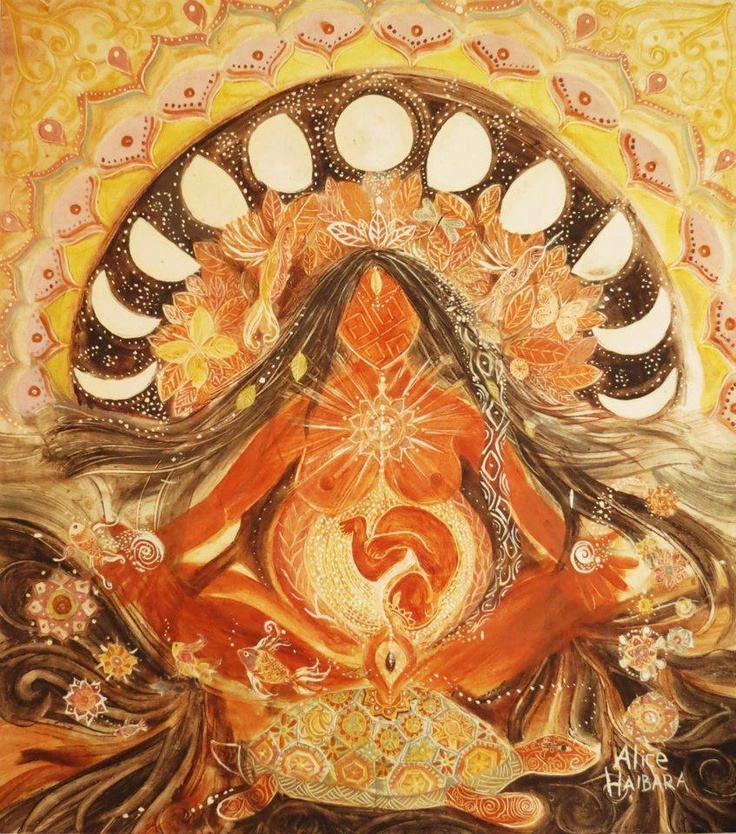Visualizing life and birth in the work of Alice Haibara

Grande Mãe, earth pigments and painting on canvas
Copyright 2012, Alice Haibara, All Rights reserved.
Alice Haibara, an artist and anthropologist, has conducted graduate field research on different forms of knowledge found and utilized within the culture of the Kaxinawá, an indigenous people of Brazil and Peru. She has looked specifically at Kaxinawá chants. As an undergraduate, she focused on the Mbya Guarani people and looked specifically at learning processes and anthropology of the child. In her artwork, Haibara uses natural pigments and indigenous imagery to paint themes that incorporate the body, including the maternal body.
In this Grande Mãe (Great Mother), Haibara uses earth tones to depict a pregnant woman who is in the process of giving birth, her baby curled in the womb, drawn outwards towards the woman’s yoni. The yoni glows and emanates from the woman’s body, acting as a focal point for the viewer. Beneath the woman’s form rests a sturdy tortoise, itself a symbol of longevity. The composition of the piece is marked by a dynamism that is both energetic and calming.
Pregnant women who use this image in the visualization of birth can appropriate the imagery and imagine a soothing glow encompassing the babies in their wombs. The image also reminds women that they are part of a lineage of birth, connected to the natural world, and that birth is a process shared by women across culture and time.
Alice Haibara may be contacted through her Facebook Page. Information about her academic work and history is published here.